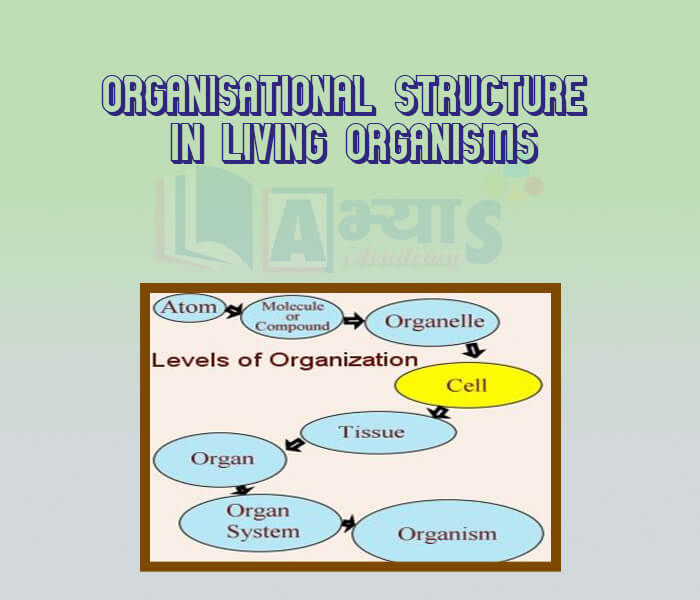Organisational Structure in Living Organisms







Organisational Structure in Living Organisms
The cell is the smallest unit of a living organism. It has a structure of its own and performs many functions. Group of cells make a tissue. Tissues collectively form organs. The different organs in turn, working together for a certain major activity, form an organ system. All these levels of organisation are called as level of organization of organisms.
Cells are the basic unit of life- they are the smallest functional units of an organism and are microscopic objects which contain a cytoplasm and a nucleus surrounded by a cell membrane .
Tissues are groups of cells of the same type or from the same place that accomplish a particular task. For eg; Muscle tissues, connective tissues, nervous tissue etc.
Organs are part of an organism that is usually self- contained and has a specific function or purpose. For eg: Heart, liver, kidneys etc.
The digestive system contains the stomach, oesophagus, small intestine, large intestine, pancreas, liver, gall bladder, rectum and anus is called _______________________ . | |||
| Right Option : C | |||
| View Explanation | |||
Which of the following are correct ? (a) Tissues are groups of cells of the same type or from the same place that accomplish a particular task. (b) The example of tissue are Heart, liver, kidneys etc. | |||
| Right Option : A | |||
| View Explanation | |||
Which of the following are correct ? (a) Tissues are groups of cells of the same type or from the same place that accomplish a particular task. (b) Cells are the basic unit of life which contain a cytoplasm and a nucleus surrounded by a cell membrane .
| |||
| Right Option : D | |||
| View Explanation | |||
Students / Parents Reviews [10]
I have spent a wonderful time in Abhyas academy. It has made my reasoning more apt, English more stronger and Maths an interesting subject for me. It has given me a habbit of self studying

Yatharthi Sharma
10thOne of the best institutes to develope a child interest in studies.Provides SST and English knowledge also unlike other institutes. Teachers are co operative and friendly online tests andPPT develope practical knowledge also.

Aman Kumar Shrivastava
10thMy experience was very good with Abhyas academy. I am studying here from 6th class and I am satisfied by its results in my life. I improved a lot here ahead of school syllabus.

Ayan Ghosh
8thA marvelous experience with Abhyas. I am glad to share that my ward has achieved more than enough at the Ambala ABHYAS centre. Years have passed on and more and more he has gained. May the centre flourish and develop day by day by the grace of God.

Archit Segal
7thMy experience with Abhyas is very good. I have learnt many things here like vedic maths and reasoning also. Teachers here first take our doubts and then there are assignments to verify our weak points.

Shivam Rana
7thBeing a parent, I saw my daughter improvement in her studies by seeing a good result in all day to day compititive exam TMO, NSO, IEO etc and as well as studies. I have got a fruitful result from my daughter.

Prisha Gupta
8thIt has a great methodology. Students here can get analysis to their test quickly.We can learn easily through PPTs and the testing methods are good. We know that where we have to practice

Barkha Arora
10thAbhyas Methodology is very good. It is based on according to student and each child manages accordingly to its properly. Methodology has improved the abilities of students to shine them in future.

Manish Kumar
10thAbout Abhyas metholodology the teachers are very nice and hardworking toward students.The Centre Head Mrs Anu Sethi is also a brilliant teacher.Abhyas has taught me how to overcome problems and has always taken my doubts and suppoeted me.

Shreya Shrivastava
8thAbhyas is a complete education Institute. Here extreme care is taken by teacher with the help of regular exam. Extra classes also conducted by the institute, if the student is weak.
